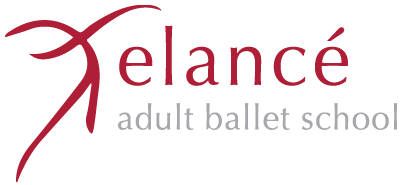 Do Pirouettes feel like the enemy? Maybe a balance in arabesque makes you feel queasy. Perhaps the request for expression makes you want to run for the hills. If this sounds like you then it’s possible that your emotional thinking and your rational thinking are out of balance. Both thought processes have a role to play in ballet training and an imbalance can happen without you even realising! With a little tweaking in your approach, your fears will ease, giving you space to truly enjoy your adult ballet class.
Do Pirouettes feel like the enemy? Maybe a balance in arabesque makes you feel queasy. Perhaps the request for expression makes you want to run for the hills. If this sounds like you then it’s possible that your emotional thinking and your rational thinking are out of balance. Both thought processes have a role to play in ballet training and an imbalance can happen without you even realising! With a little tweaking in your approach, your fears will ease, giving you space to truly enjoy your adult ballet class.
Ballet is an emotional business! There is a desire to create beautiful movement in harmony with music, and a feeling of exhilaration when it comes together. Your adult ballet class can boost your mood, giving an emotional and physical high that can last for days. The unique physical challenge of ballet technique, partnered with the emotional investment that ballet demands, is an invigorating and intoxicating mix!
There are however, other emotions that can play a part in your adult ballet class. Wouldn’t it be great if your negative thought processes could just be switched off? They emerge when something doesn’t go to plan, telling you that it’s impossible to do what is being asked. They can derail any good intentions of holding that balance or executing that polished pirouette. It is in these moments that you need to switch off the emotional part of your brain and delve into some rational thinking. In short, let go of the emotion and focus on the task at hand.
An inspiring and revered ballet master recently said that pirouettes are rational and to save the emotion for allegro. This idea of rational versus emotional thinking can be applied to individual elements and the class on a whole. Rational thinking will help you to focus on the function and execution of your technique. There are times when we need both emotional and rational in the one moment. Both ways of thinking are necessary; the emotional approach is about connection and communication, whereas the rational approach is about the engineering of the steps.
Successfully revealing emotion through your ballet steps is referred to as dance quality. This quality helps to define different dynamics; the adage that showcases strength and sensitivity, the pirouette that requires punch and bravado, and the allegro that shines with power and vitality. Developing dance quality creates an emotional connection with your audience. In class you should be striving to connect with your audience, even if they are imaginary!
Rational thinking in ballet is the business side of the arrangement. Without it your technique could be restricted by negative emotions and hope. Hope is an optimistic feeling but one that has no place in ballet! Hoping that something will work is as dangerous in your adult ballet class as choosing to skydive without a parachute; it probably won’t end well. Replacing hope with intention will see results. Approaching a balance with an internal checklist of how to establish and maintain it, and a strong intention to execute it to the best of your abilities, will have a far better outcome than just hoping the balance sticks.
Becoming an accomplished adult ballet student is about finding a happy medium between emotional and rational tactics. Purely emotional thinking means that hope leads the way and your technique will falter. Purely rational thinking sees your dance quality and connection with the audience lost. The next time you attend your adult ballet class try it for yourself; you will be amazed at how much more you can achieve by using your rational thought processes and keeping your unhelpful emotions in check.

